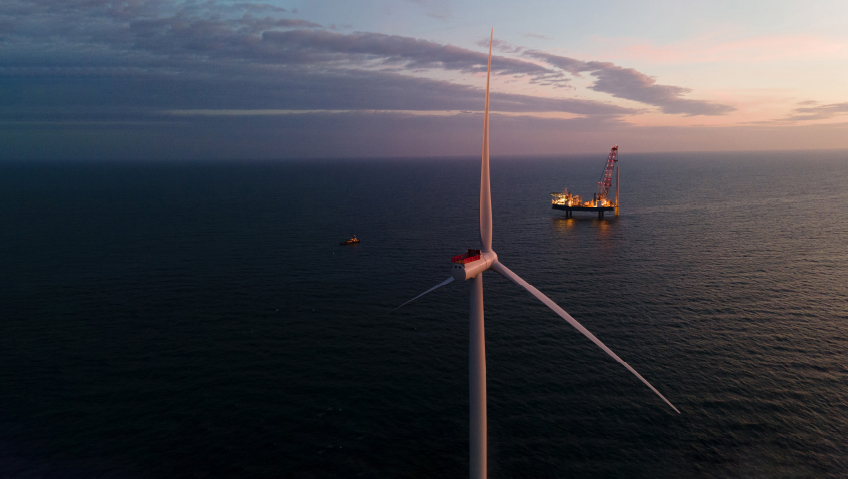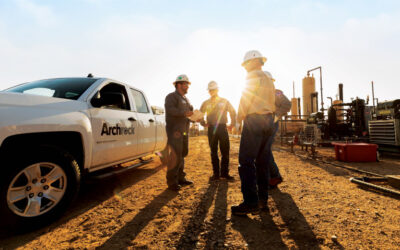To build a sustainable, clean energy economy that benefits all Americans, the Office of Energy Efficiency and Renewable Energy (EERE) utilizes applied research, development, demonstration, and deployment programs to bring down the cost of renewable, green, and Earth-friendly energy to parity with conventional energy sources.
Shifting the U.S. economy to one based on clean energy will improve economic growth, energy independence, and the country’s health and well-being. By focusing on the Biden Administration’s priorities to cut emissions, create jobs, and promote energy justice, EERE serves the federal government’s mandate to reduce costs for renewable energy and energy efficiency technologies, including solar and wind. EERE also provides insight into working alongside industry partners in geothermal, offshore wind, hydrogen, and more.
As one of the Applied Energy offices within the U.S. Department of Energy (DOE) along with the Office of Electricity, the Office of Nuclear Energy, and the Office of Fossil Energy and Carbon Management, EERE invests in the vast majority of the technologies driving the clean energy transition.
“We work in three primary sectors: renewable energy generation production, sustainable transportation, and buildings and industry,” says Alejandro Moreno, Acting Assistant Secretary for Energy Efficiency and Renewable Energy. “Our mission is to ensure American leadership in clean energy technologies and throughout the clean energy transition.”
DOE has 17 national laboratories with the National Renewable Energy Laboratory in Golden, Colorado stewarded by EERE. Together, they cover a wide range of clean energy technologies—including wind, solar, geothermal, water power, electric vehicles and batteries, building technologies, advanced materials and manufacturing, bioenergy, hydrogen and fuel cells, and industrial efficiency—with successes driven in large part by EERE research, but also by technologies on the cusp of transforming the energy sector. For example, we currently use hydrogen as an industrial fuel for heavy-duty or long-range transport, or sustainable aviation fuels.
“Many of the commitments coming out of the airline industry right now are pledging to transform the fuels they use and transform their fleet to be low carbon,” says Moreno. “That’s primarily through fuels derived from bioenergy. EERE’s bioenergy program is working on the research to support this.”
EERE also does a tremendous amount of work to help reduce the carbon footprint of industrial processes, ranging from chemical production to cement and steel, which are some of the hardest areas to decarbonize in today’s economy as they require extremely heat-intensive processes.
“Not everything can be electrified the way vehicles can,” Moreno says. “Not all those processes can use electricity, as it doesn’t always generate enough heat. We need to either find new processes that accomplish the same thing with less heat or find new fuels that produce that level of heat without the same level of greenhouse gas emissions.”
During its decades of tenure, EERE has had impressive successes, including The SunShot Initiative, reducing the cost of solar photovoltaics by 75 percent to six cents per kilowatt hour, a goal accomplished three years ahead of schedule.
Similarly, EERE’s aim of having wind supply five percent of U.S. electricity by 2020 saw it reach seven to eight percent of the country’s electricity by that year. And in the last decade alone, the cost of lithium-ion battery storage has fallen about 90 percent, in large part driven by research from EERE’s Vehicle Technologies Office.
“That’s one of the key reasons you see the proliferation of electric vehicles on the roads today,” Moreno says. “Manufacturers can make commitments to have a certain percentage of their fleet be electric by 2030 or 2035 because we know we can do so in a way that’s affordable and meets consumer needs.”
There’s no time to waste when it comes to meeting these goals across numerous industrial sectors. The current administration has made it clear that their goal is to fully decarbonize the electricity sector by 2035, and to have a fully Net Zero economy, meaning all energy on balance produces zero emissions, by 2050.
Much of the reduction in emissions from transportation and from industry and buildings depends on the reduction of emissions in the power sector, adds Moreno. If you drive an electric vehicle but charge that vehicle with electricity that’s heavily fossil-fuel dominated, you’re not necessarily reducing emissions as much as if that electricity were fully clean.
“In the power sector, there’s an urgency to move very quickly,” says Moreno. “You’re seeing that not just in the United States. The International Energy Agency, which historically has been very focused on fossil fuels and oil, came out with a global target of getting to Net Zero by 2050 globally, which also requires a fully clean power sector.”
Evidence shows the speed at which greenhouse gases are beginning to concentrate and build up in the atmosphere, meaning there is limited time to act, he adds. Industries need to start dramatically reducing the amount of greenhouse gas emissions going into the atmosphere now to first slow down the increases and then stabilize the overall amount of gases such that any increase in atmospheric temperature will not be greater than is manageable.
Under the Biden Administration, the recent Infrastructure Investment and Jobs Act, or the Bipartisan Infrastructure Law, allowed the DOE to implement $62 billion for large programs that demonstrate major new technologies at scale and focus on creating jobs for all Americans and revenue for communities across the country.
Additionally, the administration’s Inflation Reduction Act had many provisions that codified incentives for a wide range of clean energy technologies—not just for the development of the technologies themselves, but for development in a way that ensures the benefits of the Clean Energy Transition are durable and meet the needs of ordinary Americans.
“This includes increased incentives for using domestic content, for providing good-paying jobs, and for providing and locating projects in communities that are either low-income or that have historically played a huge role in driving the abundance of low-cost energy in the United States and have been critical to the economic success of this country as a whole,” Moreno says.
“It recognizes those communities still have a huge role to play in the clean energy transition, even as the technologies themselves change. The Bipartisan Infrastructure Law and the Inflation Reduction Act are squarely focused on ensuring that happens, and that those communities continue to play an important role.”
Across the board, most companies are aware of the real role they play in the transition, but executing that will be easier for some than others. For those companies, communities, and individuals for whom that adaptation is especially challenging, EERE provides support.
There are huge opportunities, for instance, to use the equipment, expertise, and skills that underpin conventional energy in cleaner sectors, such as geothermal. “Geothermal drilling and production have a lot in common with oil and gas, particularly with offshore oil and gas drilling,” says Moreno. “It’s not exactly the same, but a lot of the equipment and skills are directly relevant and transferable.”
The DOE has created GEODE—Geothermal Energy from Oil and gas Demonstrated Engineering —to award up to $165 million over five years to expand geothermal energy deployment specifically by leveraging expertise and equipment previously used in the offshore oil and gas sector.
Opportunities also abound to use existing infrastructure such as connections to the grid from existing fossil fuel facilities, connections that are extremely valuable for the utility expertise and broader power sector expertise held by those who work in those facilities.
There are also tremendous opportunities across the board for clean energy to provide jobs and revenue to communities. One of the distinguishing factors of renewables is that many of the best resources are in rural communities, which not only have an opportunity to reap some of the revenue but also have real ownership over the infrastructure.
“This,” says Moreno, “has always been a key element of the fossil fuel and energy industry in the U.S.—the pride that communities have in providing resources that make the country run and are critical to the success of the country. Those communities still have the same opportunity to do that.”
When it comes to examples of how homeowners themselves can help, retrofitting homes to reduce overall energy consumption is one of the best and easiest ways to save money, as well as being vital for the climate, says Moreno. “The less energy we use overall, the less new energy generation we need to create, and the less new infrastructure we need to build.”
DOE has also created several programs that help businesses understand how to reduce emissions and save money. Energy Savings Hub, an online portal that provides direct access to the tools to dramatically cut energy costs.
In terms of milestones, EERE has several it is aiming to reach. “Our primary mission is research and technology development, and there are still a number of technologies we know will be vital in reaching our 2050 decarbonization and clean energy goals in the most reliable and most affordable way possible,” Moreno says.
One of these focuses on reducing the cost of hydrogen to $1 per kilowatt hour, which would be 80 percent below current rates. The second is related to long-duration storage. As more wind and solar power come onto the grid, being able to store that energy as it’s generated and release it when demand is highest will become more important, particularly over longer periods.
Geothermal is another focus. Even though in many locations it is commercially competitive with gas for heating, it currently satisfies a small percentage of the country’s overall consumption of electricity. With advances in both drilling technology and technologies that enable management of underground reservoirs in conditions of higher temperatures and higher pressures, the potential for geothermal is roughly equivalent to the output of today’s nuclear fleet, a substantial resource.
“And geothermal is spread across wide swaths of the country,” says Moreno. “It also has vast potential for direct heating for small communities looking to reduce their dependence on natural gas.”
While land-based wind is one of the cheapest sources of electricity in many parts of the country, there is immense potential for offshore wind energy. However, in half of the potential sites where floating turbines would be most effectively deployed, the water is too deep to attach them directly to the seabed. Most of the East Coast has shallow water, but on the Pacific coasts and in parts of the Gulf of Maine, the water gets deep very fast and close to shore, requiring turbines that flood—a technology still under development.
“We are committed to driving down the costs of floating offshore wind to $45 a megawatt hour by 2035, which would make it broadly competitive with commercial electricity today,” says Moreno. “This supports the current administration’s ambitious goals and would also allow us to take leadership in the U.S. of the manufacturing and supply chain of an entirely new clean energy industry, one where the manufacturing could take place anywhere in the country but relies heavily on port facilities, which will need to expand and can create numerous logistics jobs as well as operational maintenance jobs for ports and the communities based by them and out of them.”
Whether it is transitioning to wind, solar, or geothermal power, reducing the country’s carbon footprint allows us to generate the energy needed without the greenhouse gas emissions and negative environmental effects that come with fossil fuels, in turn helping to reduce climate change and making the world a better place for all.













